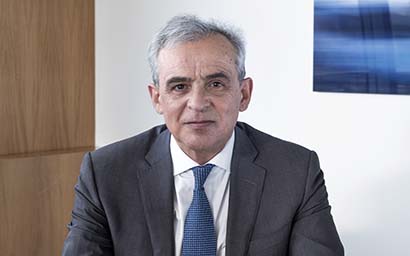The road ahead for investors is uncertain with expectations of 1970s-style stagflation rather than the roaring 1920s that some might have expected after the pandemic, writes Pascal Blanqué, group CIO of Amundi Asset Management.
So far, the second part of the year has brought new highs for investors. Equity markets have peaked (26 July was the new top for the S&P500) while bond investors also enjoyed recent movements as US Treasury yields edged lower, erasing most of the rise experienced in the first part of the year. Therefore, balanced portfolio investors are enjoying stellar performances, with the Bloomberg 60/40 equity/bonds index returning above 20% on a one-year horizon.
However, the summer is starting to look anything but relaxing. Market uncertainty is on the rise not only because of short-term news on the Covid-19 Delta variant and the turmoil on China stocks amid regulatory changes, but more importantly because new conflicting narratives are taking centre stage.
Market trends are driven by battles between narratives. One becomes dominant until a new one challenges and eventually replaces it. So far this year, we have seen the narrative of the never-ending monetary umbrella, coupled with the great recovery lifting markets. The euphoria around the exceptional rebound in growth has led to the idea of a more structural economic boom propelled by technological advances accelerated during the Covid-19 crisis (somewhat mirroring the experience of the ‘Roaring Twenties’).
The system has now been pushed to extremes, with bond and equity valuations beyond what can be justified by long-term trends in growth, inflation and earnings.
No doubt, the battle of narratives will see a winner forming a fresh new consensus throughout a sort of discovery process around the key question: what will be left of the consensual rebound in activity and inflation?
The first sequence characterised by the Goldilocks narrative of stronger growth and lower inflation beyond the peak has ended. The rapid emergence of competing narratives has suddenly focused attention on the weaknesses on the previous assumptions. The narrative of inflation that resurfaced in the first part of the year and lifted bond yields higher in the spring, has now receded amid the revenge of monetary dominance, with the Fed’s temporary view of a rise in inflation taken for granted by markets.
Doubts are now materialising on the growth front, challenging the narrative of the current great recovery mirroring the booming 1920s. Moreover, as the great expectations regarding technological change and associated productivity gains are fading, current market valuations are starting to point to a potential tech bubble.
This should sound like a wake-up call for investors – ie, a realisation that the castle was built on shifting sands. While at the start of the summer, the market was pricing in higher growth and low inflation, it has suddenly moved to pricing in lower growth with low inflation.
We may be just one narrative change away from the next big move, which will be the recognition that inflation is not just temporary, but more structural than what the market is currently pricing in. This will definitely awaken the stagflationary ghost (lower growth coupled with higher inflation). Although this does not appear to be just around the corner, investors have not faced such a combination since the 1970s – but they should now prepare for it, in our view. Any possible growth accident could be the trigger for markets to price in additional stimuli in an era when markets are already addicted to them.
The Fed is the actor to watch. The announcement of a tapering in mortgage bonds should be welcome at this point amid real estate excesses. Yet, while this could help to prevent the creation of a bubble later, for investors, it also means that it is it time to reassess the growth/inflation path and central banks’ reaction function, aware that what was anchored as a certainty (inflation expectations) is now no longer rock-solid.
Preparing for turbulent times, the investor mantra should be ‘relative value reigns supreme’. Frequent market gyrations will accompany adjustments to a new market regime (wherever growth and inflation land after the crisis).
This new environment comes with important investment implications. First, currencies are back as a tool for playing adjustments in growth/inflation patterns. Secondly, active management is in focus as the selection of business cases in equity and credit that can withstand rising inflation will be a key theme moving forward. Thirdly, a strategic short duration stance is likely here to stay and tactical adjustments on duration and allocation will become more frequent, making the case for ETFs (in bond and in equity sectors) being an important tool to rebalance allocation.
A reordering in bond and equity risk premia is the minimum investors should expect from a regime shift. The fact that equities offer good value relative to bonds does not tell the whole story. The fascination regarding relative value for investors simultaneously giving up on absolute valuations will, in retrospect, appear to have been a sign of bubbling times pointing towards changing times (ie, the transition to a new regime).
© 2021 funds europe





